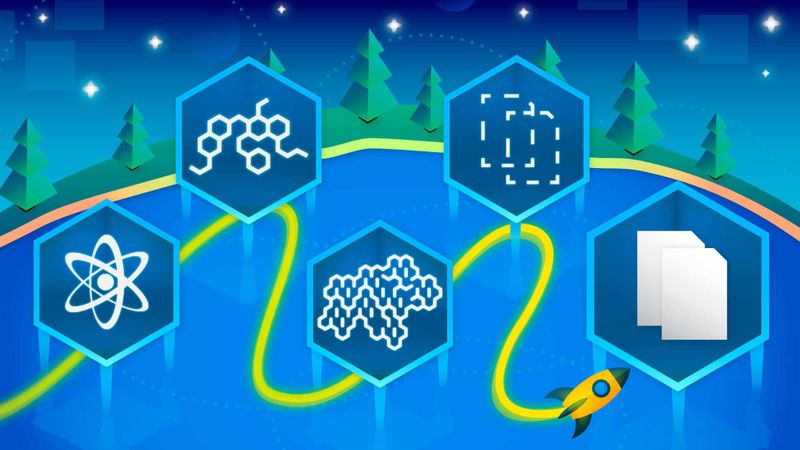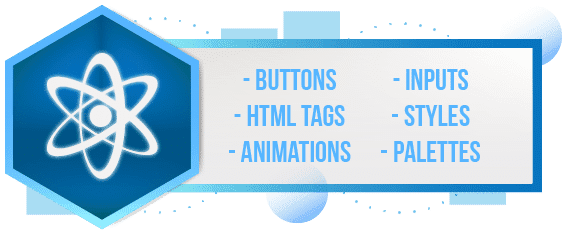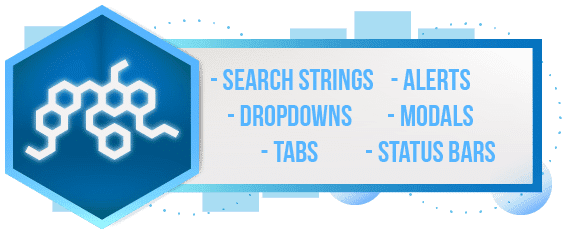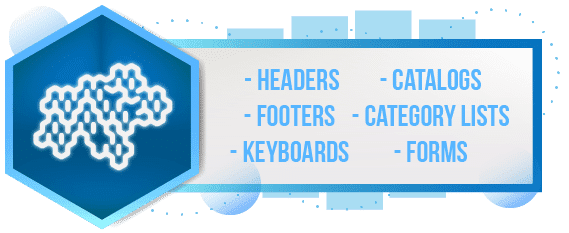Atomic Design Technology: Future of Interface Structuring
READ WHOLE ARTICLE

Day by day designers and developers are tasked with creating interfaces for an increasing number of users who deal with different browsers on various devices with countless screen sizes and with as many features as never before. This is really a daunting task. Fortunately, design systems come to the rescue.
As the art of web design keeps on advancing, we’re perceiving the need to create mindful design structures, as opposed to making basic collections of website pages.
A great deal has been said about making design, and quite a bit of it centers around building up systems for shading, typography, texture, etc. Increasing number of engineers are getting intrigued by what our interfaces are involved and how we can develop design development methodology in a progressively systematic manner. Brad Frost is one of the great founders of the system, which will be discussed in this article – Atomic design technology.
The idea
Atomic Design was developed in response to this digital, adaptive world in which we all live and work. While looking for motivation and parallels, Brad decided to return to science. The thinking is that all issues (regardless of whether fluid, gas and so on) consist of particles. Those nuclear units bond together to shape molecules, which thus consolidate into progressively complex life forms to at last make all issue in our universe.
Essentially, interfaces are comprised of small segments too. This implies we can separate whole interfaces into principal developing squares and work from that point. That is the fundamental significance of Atomic design.
Atomic design is an approach for establishing design systems. There are five exact levels in atomic design:
- Atoms
- Molecules
- Organisms
- Templates
- Pages
Let’s go deep into each level.
1. Atoms
Atoms are the essential building squares of issue. Connected to web interfaces, they are our buttons, inputs or HTML tags.

Also atoms can include more abstract components like shading palettes, textual styles and much increasingly undetectable pParts of an interface like animations.
Like natural atoms, they’re genuinely dynamic and frequently not appallingly valuable all alone. Besides, they’re great as a reference in substance of an pattern library as all your worldwide styles, spread out initially, will be easily seen.
2. Molecules
Things are becoming more fascinating and substantial when we begin joining particles together. Molecules are gatherings of atoms reinforced together and are the littlest major units of a compound. They take their unique properties and fill in as the foundation of our structure frameworks.

For example, a button or a form aren’t excessively helpful without one more input, but consolidate them together as a structure and now they can really accomplish something together.
Working up to molecules from atoms supports a “complete a certain something and do it well” mindset. While these units can be unpredictable, as a standard guideline they are generally basic mixes of atoms worked for reuse.
3. Organisms
They are molecules which give us some structure squares to work with, and we would now be able to join them together to shape organisms. Life forms are gatherings of molecules combined to frame a generally mind boggling, unmistakable segment of an interface.

We’re beginning to get progressively concrete. A customer probably won’t be horribly intrigued by the atoms of a structure framework, but with organisms we can see the final interface starting to come to fruition.
Organisms can comprise of alike and additionally unique atom types. For example, a masthead organism may include various parts like a logo, essential navigation, search field, and rundown of social media channels. Be that as it may, an “item network” organism may include a similar particle (perhaps containing an item picture, item title and cost) rehashed again and again.
Working up from atoms to organisms supports making independent, compact, reusable segments.
4. Templates
At the template stage, we lose our chemistry similarity to get into language that sounds better to our partners and our final output. Templates include most of gatherings of organisms sewed together to construct pages. Here we begin to see the design meeting up together and start seeing things like format as reality.

Templates are extremely concrete and give setting to all these generally abstract molecules and organisms. Templates are also where clients begin observing the final design set up. As far as the inventor can tell working with this technique, templates begin their life as HTML wireframes, but after some time increment devotion to at last become the last deliverable.
Bearded Studio in Pittsburgh follow a similar process, where designs begin grayscale and format less however gradually increment loyalty until the last structure is set up.
5. Pages
Pages are explicit storage of templates. Here, placeholder content is supplanted with genuine substance to give an exact delineation of what a client will at last observe.

Pages are the largest amount of fidelity and because they’re the most substantial, it’s normally where a lot of people in the process invest the vast majority of their energy and what most reviews rotate around.
The page stage is basic as it’s the place we test the adequacy of the design structure. Review everything in setting enables us to circle back to adjust our particles, molecules, and templates to better address the real context of the design.
Pages are additionally the spot to test varieties in layouts. For example, you should explain what a feature containing 40 characters resembles, but, in addition, exhibit what 340 characters resembles. What does it resemble when a client has one thing in their shopping basket versus 10 things with a discount code applied? Once more, these particular occasions impact how we circle back through and build our framework.
What Should a Client Know About Design?
Why you need it
From numerous points of view, this is the manner by which we’ve been doing things from the beginning, regardless of whether we haven’t been intentionally contemplating it in this particular way.
Atomic design methodology gives a reasonable strategy to making design systems. Customers and colleagues can value the idea of design structures by observing the means spread out before them.
This strategy enables us to cross from abstract to exact. Along these lines, we can make frameworks that advance consistency and versatility while at the same time appearing in their final setting. What’s more, by assembling as opposed to deconstructing, we’re making a framework directly out of the entryway rather than carefully choosing patterns sometime later.
5 Trends in E-commerce Website Design
Final Words
The creator of Atomic design, Brad Frost, is so inspired with the strategy and wrote the book about it. The book “Atomic Web Design” describes in detail the whole process of creating and maintaining reliable design systems that will enable to produce better and more logical user interfaces. Also, to apply this methodology to the work, he created a tool called Pattern Lab to actually make these atomic design systems. It’s available to try out and test such technology with your projects. Multi-Programming Solutions goes with the times and is aware of atomic design systems. We can find different solutions for your idea and make your project work.
Text us to get the details!

36 Kings Road
CM1 4HP Chelmsford
England


